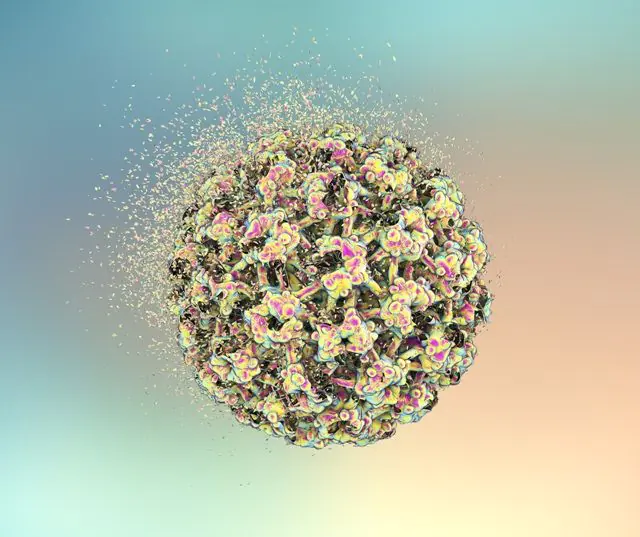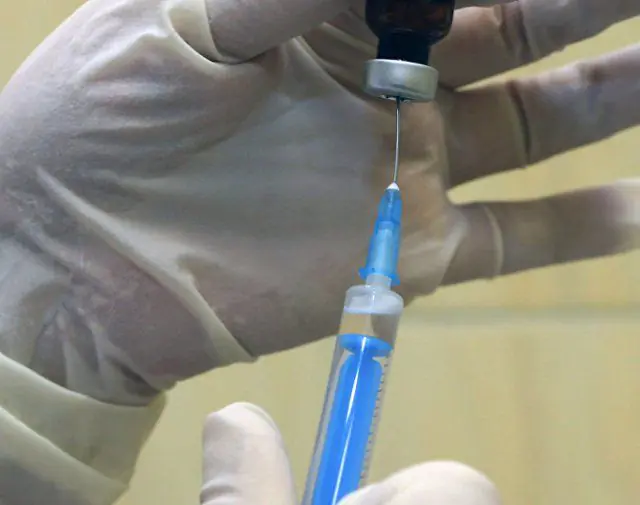
- Is the papilloma virus contagious?
- Routes of transmission of HPV
- Sexual
- Domestic
- Contact
- Vertical transmission
- Prevention of infection
Human papillomavirus is a group of pathogenic microorganisms that can infect cells of the skin and mucous membranes. There are more than 120 of its types, some of which belong to strains with a high and medium degree of oncogenicity. HPV is widely known for its tendency to migrate between people, making its carriers potentially dangerous to those who are healthy. There are 4 main routes of transmission of HPV. Let's take a closer look at how the human papillomavirus is transmitted.
Is the papilloma virus contagious?

To find out how papillomas are transmitted, you must first understand that they are of viral origin and the infectiousness of the pathogen that causes them is very high. Evidence of this is the simple mechanism of transmission of HPV from a sick person to a healthy person, which, in the absence of proper and timely treatment, provokes the development of the disease “papillomatosis”.
Papillomas themselves, which appear as a result of the active activity of HPV, do not pose a danger to others. The threat comes from the virus that caused them. Moreover, absolutely all of them migrate between people, regardless of type, and there are more than 70 strains.
Important! When considering the question of how the papilloma virus is transmitted, it must be said that the most contagious are those types that cause laryngeal papillomatosis (18 and 35) and lead to the appearance of genital warts on the female and male genital organs (6 and 11).Routes of transmission of HPV
There are 4 ways of HPV penetration into the body of a healthy person: sexual intercourse, during unprotected sexual intercourse, household, birth and contact. The first two ways are the most common, but others are also sometimes found in medical practice.
Sexual transmission of papillomavirus

If you are interested in how papillomas are transmitted during sexual intercourse, then first you should know that most often in this way, viruses of types 6 and 11 penetrate inside, which, as we have already said here, provoke the appearance of formations on the genitals. This is explained by the close contact of the growth with the woman’s vaginal mucosa. When the growth is damaged, HPV comes out, spreads to the walls of the vulva, and if the integrity of the surfaces is damaged and there are ulcers, the infectious agent quietly penetrates the blood and infects the cells.
Here's how the human papillomavirus is transmitted sexually in women and men:
- Oral contact. In this form of intimate relationships, sexual needs are satisfied through caresses of the genitals (fellatio) and erogenous zones. This also includes anilingus and cunnilingus, used on partners. In this case, the “receiving” party is more susceptible to infection if the person has fresh wounds in the oral cavity through which the virus can freely enter the body.
- Vaginal contact. This is a classic way of performing coitus, which involves penetration of a man’s penis into a woman’s vagina with or without further ejaculation. This form of sexual intercourse is the most dangerous due to the close contact of the mucous membranes of the vagina and the skin of the phallus. And there should be no room for doubt about whether the human papillomavirus will be transmitted when surfaces are damaged. If they are intact, the likelihood of this is reduced.
- Anal contact. This, as in the case of vaginal sexual intercourse, is a rather dangerous way of intercourse in terms of infection with the papilloma virus. The reason for this is the high probability of damage to the rectal mucosa as a result of insufficient preparation for intercourse. Due to the formation of cracks and the appearance of bleeding, HPV can freely enter the blood, and from there through it spread throughout the body.
- Read also about preventing HPV infection through kissing
Household transmission of human papillomavirus

Since the human papillomavirus can also be infected through household means, it is worth considering this method in more detail. This route is less dangerous, although it is also relevant for the penetration of HPV into a healthy body. This is due to its “survivability” in open conditions, outside of humans, especially in a humid environment. It is understood that in this case it gets inside through cuts and microcracks on the surface of the skin.
Here's how infection is possible:
- Common household items. Most often, HPV survives well on wet towels after patients take a shower. Here it can remain active for several hours or even days. Healthy men or women who wipe themselves with them, if there are lesions on the skin, have every chance of suffering from this infectious agent. The papilloma virus is also transmitted from person to person through the use of contaminated dishes, toys, and other personal items.
- Water. The papilloma virus feels great in it, as in a humid environment. Therefore, he can easily attack, without any special obstacles, a healthy person in a pool, bathhouse, sauna, or open reservoir. This problem is especially relevant where the water does not undergo the necessary treatment to remove pathogenic microorganisms.
- Handshake. If a person shakes the hand of an infected person who has not previously followed the rules of hygiene, then the virus can easily remain on the surface of the skin. If there are wounds on the palm or back of the hand, HPV can leak through the wounds into the inside. This threat also arises when you touch your lips with dirty fingers, as well as as a consequence of the habit of biting your nails.
- Read also about risk groups for household transmission of the papilloma virus
Contact route of transmission of human papillomavirus

If you are wondering whether papillomas are contagious, then to some extent, yes, they are dangerous. This route of entry of the virus into the human body is practically excluded, but must still be taken into account.
It may take place if there are cuts on the skin, which are the “gateway” for the infectious agent. The likelihood of this increases with careless shaving, hair removal, scrubbing and other traumatic cosmetic procedures. The danger arises if this place rubs against a formation on the body of another person.
Those who want to know whether papilloma is transmitted between men and women need to understand that the contact route also implies HPV infection during kissing, since the virus is present in a certain amount in the patient’s saliva. But at the same time, we can talk about its penetration into the body only if a healthy partner has violations of the integrity of the mucous membrane. If it is not damaged, then such a risk is almost completely eliminated.
The risk group includes massage therapistshaving close contact with the bare skin of an HPV carrier. This also includes doctors, especially dentists and surgeons, who work most actively with human skin and mucous membranes.
- Read also: Is HPV transmitted through a condom?
Vertical transmission of HPV during pregnancy and childbirth

This mechanism of HPV penetration into a child’s body accounts for no more than 5-10% of all cases of infection. There are two ways of transmitting the human papillomavirus: directly during pregnancy through the placenta and during delivery, at the time of its exit from the uterus.
Note! The first method is relevant in light of the fact that cases of detection of an infectious agent in children who were born by cesarean section have been identified.If a mother does not have papillomas on her body during pregnancy, this does not mean that the child is completely safe. It may well be that the virus is simply in a “dormant” phase and does not threaten the baby’s health at this particular moment. After the “awakening” of HPV, the situation usually changes significantly for the worse.
Prevention of papilloma virus infection

Since the human papillomavirus is transmitted through microdamage to the skin, it is always necessary to monitor its integrity. If wounds and cracks appear, you need to promptly treat them with antiseptics and accelerate tissue regeneration using special means.
You should not touch these areas with dirty hands, much less allow them to come into contact with formations on the body of other people.
It is extremely important to observe the rules of personal hygiene - always wash your hands after returning to the street, and also get rid of the habit of biting your lips and biting your nails.
In addition to this, it is necessary to avoid sexual contacts with untested partners and try to use contraception in the form of condoms.
Anemia and immunodeficiency should also be treated in a timely manner to strengthen the body’s protective properties, when weakened it becomes very difficult to resist the attacks of the virus.
One of the effective ways to prevent the transmission of human papillomavirus is appropriate vaccination with Gardasil or Cervarix. They are mainly used to prevent the penetration of viruses of types 16 and 18, which cause cervical cancer. It is recommended to repeat vaccinations at least once every 5 years.How the human papillomavirus is transmitted - watch the video:
We tried to consider all possible ways in which the human papillomavirus is transmitted. Such ways are enough to be attentive to yourself both in everyday life and in intimate relationships. Only careful care of your health and timely prevention will minimize the likelihood of HPV infection.
- Related article: In what cases is it prohibited to go to the pool with papillomas?



